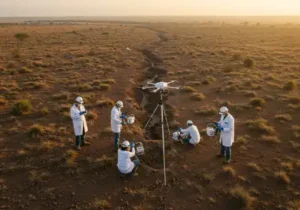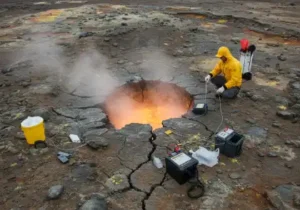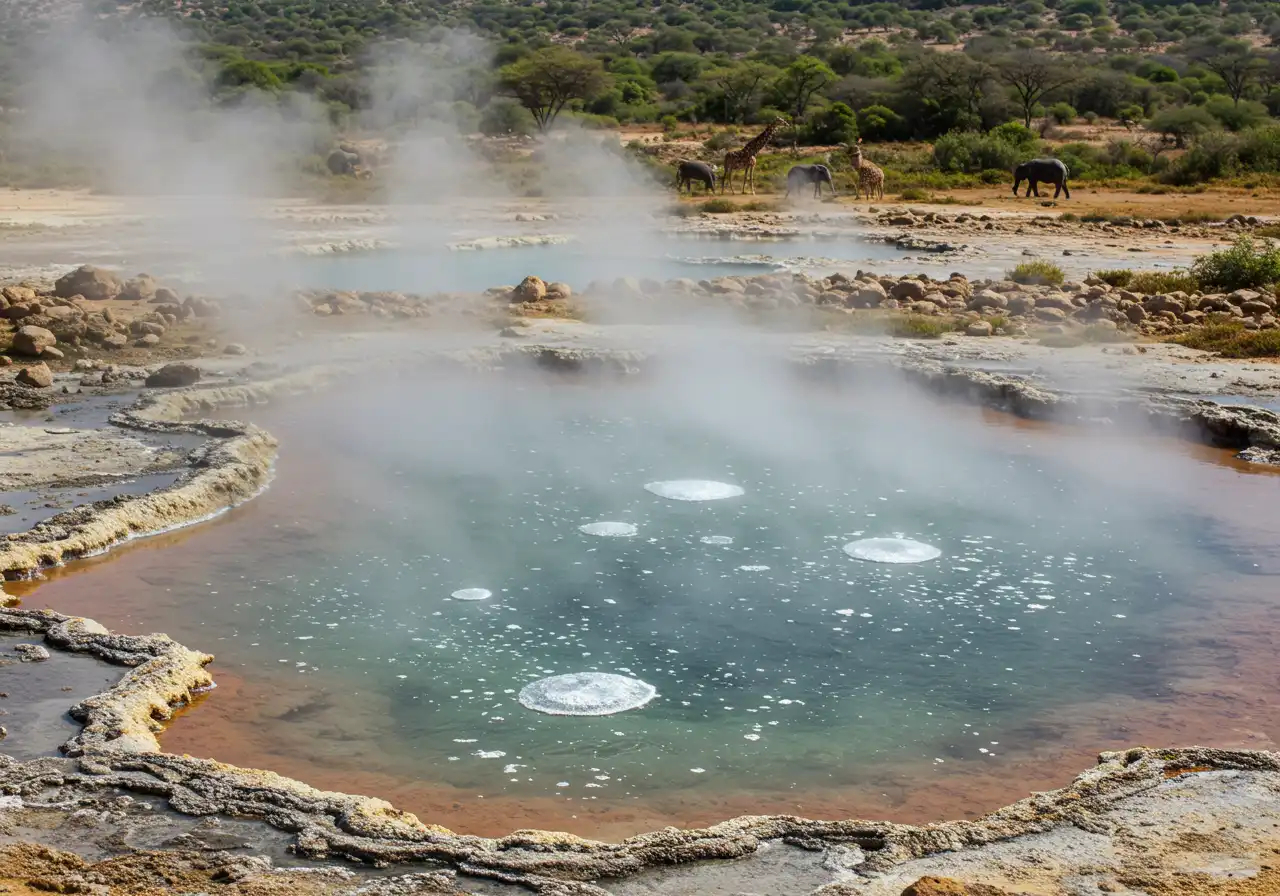When we think of carbon dioxide emissions from the Earth’s interior, volcanoes usually dominate the conversation. Yet, groundbreaking research shows that the planet’s carbon release is not confined to volcanic eruptions alone. Scientists have detected significant carbon leaks from continental rifting zones, reshaping our understanding of the deep carbon cycle and its role in long-term climate patterns.
What Is Continental Rifting?
 Continental rifting occurs when a landmass is pulled apart by tectonic forces, creating faults, fissures, and rift valleys. Over millions of years, this process can eventually split a continent in two, forming new ocean basins. One of the most famous active rifting sites is the East African Rift, stretching thousands of kilometers from Ethiopia down to Mozambique.
Continental rifting occurs when a landmass is pulled apart by tectonic forces, creating faults, fissures, and rift valleys. Over millions of years, this process can eventually split a continent in two, forming new ocean basins. One of the most famous active rifting sites is the East African Rift, stretching thousands of kilometers from Ethiopia down to Mozambique.
In a rifting zone, the Earth’s lithosphere thins, allowing magma and gases from the mantle to migrate toward the surface. Until recently, the prevailing scientific assumption was that these gases—especially CO₂—were negligible compared to emissions from volcanic activity.
New Findings on Carbon Emissions from Rift Zones
Recent studies using soil gas measurements, satellite monitoring, and geochemical analysis have revealed a different story. Research teams discovered that CO₂ is escaping continuously through fault systems within rift valleys, even in areas with no recent volcanic activity. This release can be substantial, contributing meaningfully to natural greenhouse gas levels.
For instance, scientists working in the East African Rift identified carbon-rich springs and diffuse soil emissions that, when measured over large areas, rival the output of certain volcanic systems. These “quiet” carbon leaks are now recognized as a vital piece of the deep carbon puzzle.
How Carbon Travels from the Mantle to the Atmosphere
The journey of deep carbon begins hundreds of kilometers beneath the surface, where subducted oceanic crust and mantle materials contain trapped carbon in the form of minerals and fluids. During rifting, mantle upwelling and decompression melting release these carbon stores into magma or hydrothermal fluids.
As tectonic stretching fractures the crust, carbon dioxide can migrate upward through porous rock, fault lines, and geothermal systems, eventually reaching the atmosphere or being dissolved into groundwater systems that emerge at springs.
Conceptual diagram of CO₂ movement through a continental rifting zone.
Implications for the Deep Carbon CycleThe deep carbon cycle describes the movement of carbon between Earth’s surface and its deep interior over geological timescales. Volcanic degassing has long been considered the primary natural release pathway, but continental rift emissions introduce a new dimension to the model.
Understanding this process is important for several reasons:
- Climate Models: Even small but continuous emissions influence Earth’s carbon balance over millions of years.
- Geological Monitoring: Detecting rift emissions can help assess earthquake and volcanic hazards in tectonically active regions.
- Carbon Budget Accuracy: Including rift emissions in the global carbon budget improves estimates of natural versus human-caused greenhouse gas contributions.
Case Study: The East African Rift
In East Africa, geoscientists have mapped CO₂ flux over extensive areas, revealing hotspots near geothermal springs and fault intersections. Gas isotopic signatures indicate that much of this CO₂ originates from deep mantle sources rather than surface organic decay.
These findings highlight the rift as a major, previously underestimated contributor to natural carbon release. They also emphasize the need for similar surveys in other rift zones worldwide, from the Basin and Range Province in the United States to the Rio Grande Rift in Mexico.
Why This Matters in a Human-Dominated Carbon Era
 While natural emissions from rifts are significant on geological timescales, they remain small compared to the billions of tons of CO₂ released annually by human activities. However, understanding natural fluxes is essential for accurate climate reconstructions and predicting how Earth’s carbon system might respond to long-term changes.
While natural emissions from rifts are significant on geological timescales, they remain small compared to the billions of tons of CO₂ released annually by human activities. However, understanding natural fluxes is essential for accurate climate reconstructions and predicting how Earth’s carbon system might respond to long-term changes.
By studying both volcanic and non-volcanic degassing, scientists can better anticipate the interplay between Earth’s internal processes and its surface environment—a relationship that has shaped our planet’s climate for billions of years.
Future Research Directions
Moving forward, researchers aim to:
- Map CO₂ emissions across all major continental rifts.
- Integrate satellite data with ground-based gas measurements.
- Model how rift degassing contributes to the long-term carbon cycle.
- Investigate potential feedback loops between tectonic activity and climate shifts.
This knowledge will help refine our understanding of Earth’s natural carbon budget and the resilience of its climate regulation mechanisms.
Key Takeaways
- Continental rifting zones are significant sources of deep carbon emissions.
- These emissions occur through fault systems, springs, and diffuse soil degassing.
- Including rift emissions in carbon cycle models enhances climate predictions.
- Human activities still dominate present-day CO₂ increases, but natural processes provide critical context.



